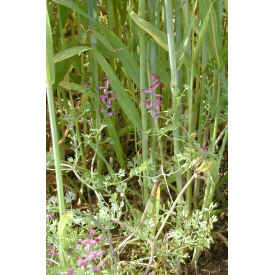
The correct definition of a ‘weed’ is a very subjective, but in simple terms
it can be described as an undesirable plant species in that particular habitat.
Weeds are considered undesirable as they have the potential to reproduce rapidly
and if left unmanaged can have a significant effect on the economics of the
crop production. Any plant by definition can be classed as a weed. Even crop
species themselves are occasionally weeds, as they can occur in the subsequent
crop, often referred to as ‘volunteers’ and require some method of control.
Generally weeds are very successful species at colonising land, as they
are very competitive, aggressive and have the ability to adapt to varying
environmental conditions due to complex survival mechanisms.
One of the major disadvantages of weed species within an arable cropping
system includes their ability to compete with the crop for water, mineral
nutrients, space and light, which in turn will have a major impact in the
final yield of that particular crop. Their presence within the crop affects
the crop environment and disease pressure.
If left until harvest weed species can hinder the combine harvesting of
the crop, by either causing the crop to lodge pre-harvest or by physically
blocking the mechanics of the combine slowing down the whole process and inevitably
wasting valuable time and money. The weed seed can contaminate the grain sample
and lead to a poor quality of crop seed, therefore also reducing the profit.
Modern agricultural systems tend to favour minimum tillage and early drilling
to increase profit margins, but careful consideration must be made in situations
where troublesome weeds are present. The ability to identify weed species
at an early growth stage will increase the choice of control mechanisms, whether
they are cultural or chemical control.
However, not all weeds are so aggressive and actually can be desirable at
particular thresholds, as they provide an important source of food and shelter
of animals and birds. Some species are now so rare that it may be considered
desirable to encourage their survival. It is therefore important to get the
correct balance of weed control within the crop by careful forward planning.